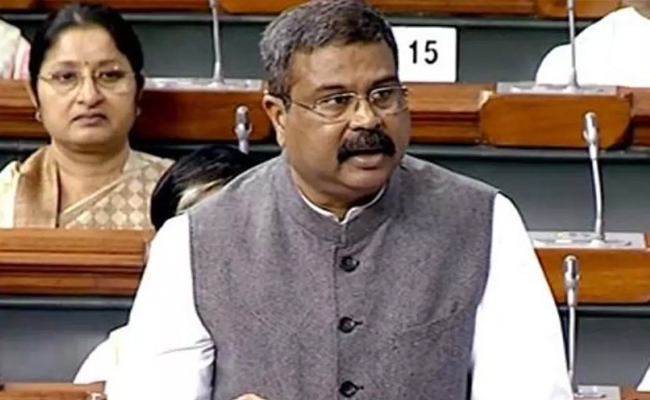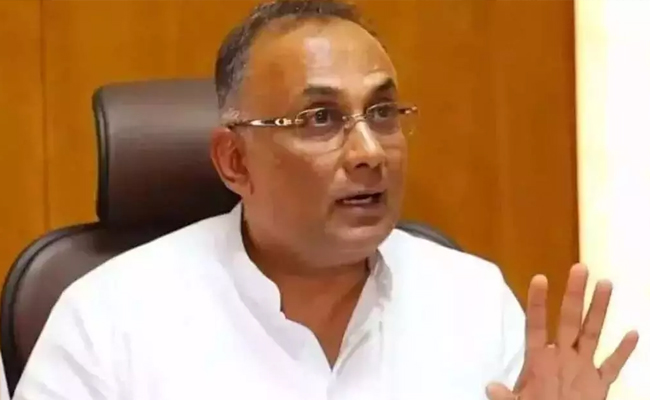In India, homemakers are having a tough time turning to alternatives to dish out tasty food at the dinner table and having to hunt through old cookbooks to find recipes to serve flavourful food for guests, as well as the men and children of the house. Tomato is almost a staple across states in India. But, suddenly, it disappeared from the markets around May-June. This continued till mid-August!
Tomato, grown as a rabi crop in such parts the country as Maharashtra, Andhra Pradesh and Karnataka, reaches the market around March to August. After that, the kharif crop arrives at the market from Nashik, in Maharashtra, and Uttar Pradesh, among certain other parts of the country. To ensure a continuous supply of tomatoes to the market, farmers usually rotate the crops.
Earlier this year, around March-April, because of a bumper crop of tomatoes, the wholesale price of tomatoes suddenly fell to Rs 2-3 per kilogram, which was not sufficient to cover even their transport cost. Because of the glut in the markets, most farmers had no takers, which forced many of them to dump truckloads of tomatoes and abandon its cultivation. Whatever of the harvest was left was damaged by torrential rain in the middle of June, leading to a sudden tomato shortage.
Soon afterwards, the prices started rising. By July, tomatoes were retailing at Rs 200-250 per kilogram, with pests and the heat wave, among other factors, playing a key role in destroying tomato harvests. Usually, July is the month when the crop price reaches higher level than at other times of the year because it sits between harvests.
Every time something like this happens, farmers en masse shift to such crops, leading to over-production. Soon, the price rise turns into a price crash and this cycle goes on year after year—with potatoes, onions, tomatoes—and the list goes on.
It becomes the responsibility of the central and state governments to take up initiatives to help farmers. For instance, to meet the present shortage, the horticulture department in Karnataka has decided to distribute millions of seedlings. But, in reality, this may lead to another huge crisis due to possible over-production. The cropping pattern in India is, basically, influenced by such factors as soil, rainfall, temperature and weather conditions.
Cropping pattern is a changeable concept that refers to the dynamic shifts of areas under various crops at any given point of time. With major technological advancements, the cropping pattern can now be determined based on weather forecasts and market needs. But state governments often fail to take proactive roles, thus leading to farmers taking random decisions.
To prevent such scenarios regarding tomatoes in future, or for that matter any other crop, governments should issue advisory on what crops farmers can grow in different areas according to the likely demand for various agricultural products considering various factors. These include deficit rainfall in various parts of a state and weather forecasts. Unless farmers get timely guidance in such matters, they will carry on following unscientific practices to their own detriment and the country’s, too.
With major advancements in technology, agriculture is witnessing major changes. At present, there are many agriculture startups that are taking up farmer-friendly initiatives.
AI Impact on Agriculture
Artificial Intelligence (AI) in agriculture is likely to play a significant role in the coming years, as it has the potential to revolutionize the sector by improving crop yields, reducing waste and increasing efficiency. A report by MarketsandMarkets says that AI in the agriculture market is about to experience exponential growth, with the market size expected to grow from $2.35 billion in 2020 to $10.83 billion by 2025 at a compound annual growth rate (CAGR) of 35.6% during the forecast period.
One of the most notable advantages of AI in agriculture is collecting and analysing large amounts of data for farmers. This helps with informed decision-making and better yields that are essential for addressing such scenarios, besides tackling the growing global food crisis.
AI can also help farmers monitor climate changes, soil conditions and crop growth. Thus, they will be able to identify diseases early and take proper preventive measures before a crop gets damaged. AI will also continue to aid in forecasting weather changes, allowing farmers to plan their activities better and to take advantage of the optimal planting season.
Additionally, AI can assist in lowering waste and the use of resources, too. For instance, farmers can use AI to optimize the use of fertilizers and the amount of water on crops for a more sustainable and environmentally friendly practice. This optimization will reduce the risk of soil and water contamination, which has become a major concern nowadays.
Let the Truth be known. If you read VB and like VB, please be a VB Supporter and Help us deliver the Truth to one and all.
New Delhi: A bill to set up a 13-member body to regulate institutions of higher education was introduced in the Lok Sabha on Monday.
Union Education Minister Dharmendra Pradhan introduced the Viksit Bharat Shiksha Adhishthan Bill, which seeks to establish an overarching higher education commission along with three councils for regulation, accreditation, and ensuring academic standards for universities and higher education institutions in India.
Meanwhile, the move drew strong opposition, with members warning that it could weaken institutional autonomy and result in excessive centralisation of higher education in India.
The Viksit Bharat Shiksha Adhishthan Bill, 2025, earlier known as the Higher Education Council of India (HECI) Bill, has been introduced in line with the National Education Policy (NEP) 2020.
The proposed legislation seeks to merge three existing regulatory bodies, the University Grants Commission (UGC), the All India Council for Technical Education (AICTE), and the National Council for Teacher Education (NCTE), into a single unified body called the Viksit Bharat Shiksha Adhishthan.
At present, the UGC regulates non-technical higher education institutions, the AICTE oversees technical education, and the NCTE governs teacher education in India.
Under the proposed framework, the new commission will function through three separate councils responsible for regulation, accreditation, and the maintenance of academic standards across universities and higher education institutions in the country.
According to the Bill, the present challenges faced by higher educational institutions due to the multiplicity of regulators having non-harmonised regulatory approval protocols will be done away with.
The higher education commission, which will be headed by a chairperson appointed by the President of India, will cover all central universities and colleges under it, institutes of national importance functioning under the administrative purview of the Ministry of Education, including IITs, NITs, IISc, IISERs, IIMs, and IIITs.
At present, IITs and IIMs are not regulated by the University Grants Commission (UGC).
Government to refer bill to JPC; Oppn slams it
The government has expressed its willingness to refer it to a joint committee after several members of the Lok Sabha expressed strong opposition to the Bill, stating that they were not given time to study its provisions.
Responding to the opposition, Parliamentary Affairs Minister Kiren Rijiju said the government intends to refer the Bill to a Joint Parliamentary Committee (JPC) for detailed examination.
Congress Lok Sabha MP Manish Tewari warned that the Bill could result in “excessive centralisation” of higher education. He argued that the proposed law violates the constitutional division of legislative powers between the Union and the states.
According to him, the Bill goes beyond setting academic standards and intrudes into areas such as administration, affiliation, and the establishment and closure of university campuses. These matters, he said, fall under Entry 25 of the Concurrent List and Entry 32 of the State List, which cover the incorporation and regulation of state universities.
Tewari further stated that the Bill suffers from “excessive delegation of legislative power” to the proposed commission. He pointed out that crucial aspects such as accreditation frameworks, degree-granting powers, penalties, institutional autonomy, and even the supersession of institutions are left to be decided through rules, regulations, and executive directions. He argued that this amounts to a violation of established constitutional principles governing delegated legislation.
Under the Bill, the regulatory council will have the power to impose heavy penalties on higher education institutions for violating provisions of the Act or related rules. Penalties range from ₹10 lakh to ₹75 lakh for repeated violations, while establishing an institution without approval from the commission or the state government could attract a fine of up to ₹2 crore.
Concerns were also raised by members from southern states over the Hindi nomenclature of the Bill. N.K. Premachandran, an MP from the Revolutionary Socialist Party representing Kollam in Kerala, said even the name of the Bill was difficult to pronounce.
He pointed out that under Article 348 of the Constitution, the text of any Bill introduced in Parliament must be in English unless Parliament decides otherwise.
DMK MP T.M. Selvaganapathy also criticised the government for naming laws and schemes only in Hindi. He said the Constitution clearly mandates that the nomenclature of a Bill should be in English so that citizens across the country can understand its intent.
Congress MP S. Jothimani from Tamil Nadu’s Karur constituency described the Bill as another attempt to impose Hindi and termed it “an attack on federalism.”



_vb_22.jpeg)

